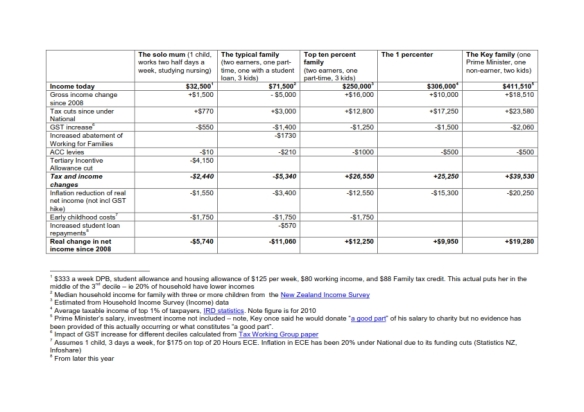Published in NZ Herald – 30 May 2012
Education Minister Hekia Parata’s comment that she was once in a class of 43 students will resonate with older New Zealanders. Large classes were the norm in the 1950’s and 60’s and I have a class photo showing 57 alongside me at primary school in South Dunedin.
Today class sizes are closer to 30 than 50 and many will think the Minister’s proposals to use an increase in class size as a way to fund improving the quality of teachers is no bad thing.
But classrooms have changed dramatically in the intervening generations. In the past most teaching was done as “chalk and talk” from the front of the room and kids assessed with exams twice a year. But teachers today are expected to see their students as individuals with individual needs, learning styles and challenges and adapt their teaching accordingly. They are expected to be able to give good and frequent individual feedback on progress and feed forward what students need to be working on to develop their learning. Assessment has grown like topsy into a much larger burden and with national standards now infecting primary schools this will increase again.
Relating to students as individuals is good education practice. This is especially so in schools in low-income areas where all the research and my many years of personal experience show the relationship between teacher and student is critical to good learning.
Changes in the teaching of children with special education needs has also impacted significantly on classrooms since 1989 when the Education Act gave children with special needs the right to enroll at their local school. This was universally welcomed but like so many good policies was never resourced for success. There is no better illustration of this than last week’s announcement that the Ministry of Education wants to close four residential schools for intellectually disabled children and those with serious behavioural difficulties and require them to access their education in mainstream schools.
This mirrors the 1998 Ministry decision to withdraw direct funding from the country’s special needs units attached to mainstream schools and require the children to enter mainstream classrooms unless their school or local cluster of schools could fund a unit themselves. Many schools and parents put up valiant struggles but the massive financial leverage of the Ministry means the small number of remaining units are facing forced closure at the end of this year.
These changes are fraught for teachers because the resources and the smaller class sizes are just not there for this to be a successful strategy in many cases. One of my most dispiriting experiences in education was some years back when a meeting of several thousand secondary school teachers loudly applauded a speaker who was struggling to support children with special education needs he was required to teach in his mainstream classroom. He was supportive of mainstreaming but frustrated at his inability to do the best for all the kids in the class without the support needed for them all to become successful learners.
Increasing class sizes makes all this that much more difficult. We already have the unsavoury behaviour of some public schools discouraging enrolment of children with special needs. God forbid that that extends to classroom teachers who will see their own reputation tarnished and their income reduced through performance pay if they welcome children with special needs into their classroom.
Today’s teachers are expected to be super-teachers – to take a class of 30 or so students and deliver increasingly individualized education programmes with much more emphasis on assessment and feedback to students and parents. Instead of helping and resourcing teachers to do this job the government is making it harder.
One of the ironies is that National Party government ministers seem to prefer to send their own kids to elite private schools where small classes are given priority, children with special education needs or behavioral problems are refused enrolment and rather than performance pay the teachers are paid the state school pay rates with an additional percentage.
And just to make sure their kids are resourced properly the government gave them a 22.3% increase in government subsidies for 2010 with further increases since.
Not so for schools in our low-income areas where student achievement is well below other areas. The issues here are multiple but the elephant in the room is our appalling low-wage economy where on top of 160,000 unemployed we have half a million people earning less than $16 an hour and over a hundred thousand who don’t get enough hours of work to enjoy a decent income.
But despite the now frequent attacks on teachers and schools New Zealand has a good public education system which consistently ranks third or fourth in the world in international achievement comparisons. If only our athletes in London could do so well.
These fine levels of educational achievement have been built by teachers and schools despite recent government policies which mimic the failed school policies from the US and UK.
Let’s give our public school teachers and public schools a break and applaud them as world champions. And let’s give them the resources and support to ensure every kid is a champion learner rather than belittle them and make their job that much harder.
John Minto
National Chairperson
Quality Public Education Coalition

